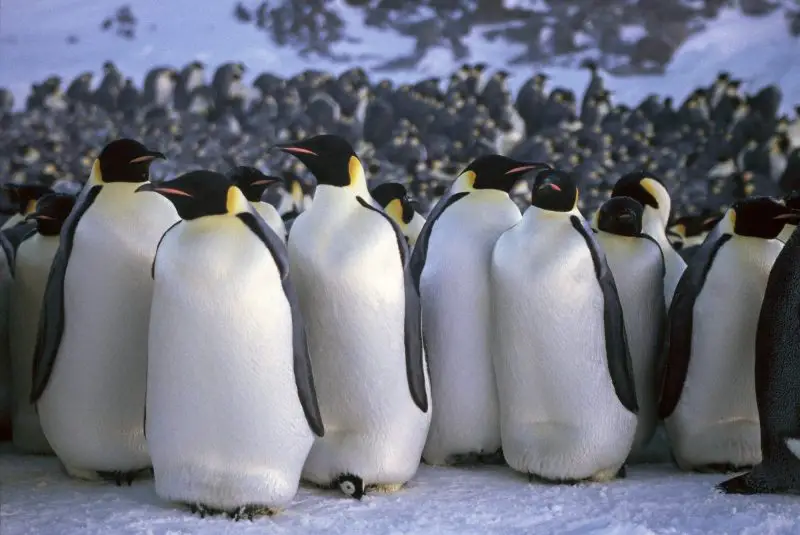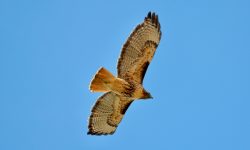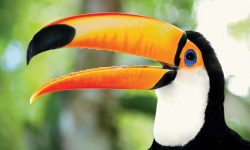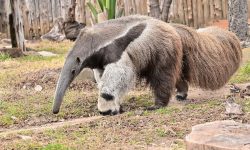The Emperor Penguin (Aptenodytes forsteri) is one of the most remarkable survivors on Earth. Enduring the brutal cold of Antarctica, these majestic birds have evolved a suite of extraordinary adaptations that allow them to thrive where few others can. From unique body structures to fascinating behavioral traits, Emperor Penguins are a masterclass in survival.
Below are 18 amazing adaptations that make them true icons of resilience.

1. Thick Layer of Blubber
Nature’s Built-in Thermal Blanket
Surviving in Antarctica means enduring temperatures that can plunge below –60°C (–76°F) and winds that roar across the ice at hurricane force. To withstand this brutal environment, Emperor Penguins rely on a remarkably thick layer of blubber beneath their skin—up to 3 centimeters deep in some individuals. This dense fat acts like an internal parka, trapping body heat and forming a crucial thermal barrier against the frigid air and icy waters.
But the blubber does more than just insulate. It serves as a vital energy reserve, especially for males during the breeding season. While incubating eggs in the heart of the Antarctic winter, male penguins fast for up to 120 days. During this time, the stored fat is slowly metabolized to fuel their bodies and keep them alive without food.
This dual-purpose adaptation—both insulation and survival fuel—is one of the main reasons Emperor Penguins can live, breed, and thrive in one of the harshest places on Earth.
2. Dense, Overlapping Feathers
Feathered Armor Against the Ice and Sea
At first glance, an Emperor Penguin’s plumage may appear sleek and simple—but beneath that smooth exterior lies a complex, high-performance insulation system. With roughly 100 feathers per square inch, their coat is one of the densest in the bird world. Each feather is short, stiff, and tightly packed, overlapping like shingles on a roof to create a near-impenetrable shield against wind and water.
This feather layering is essential in Antarctica, where icy gusts and freezing ocean spray are part of daily life. The outermost feathers are coated in oil, making them water-repellent, while the downy layer underneath traps warm air close to the skin. Together, they form a dual-layer barrier—one that locks out moisture and preserves heat, even in blizzards or while diving under sea ice.
Their feather structure also contributes to aerodynamic efficiency underwater. Smooth and streamlined, their plumage reduces drag, allowing them to glide through the ocean with minimal resistance, like a living torpedo adapted for cold and speed.
3. Counter-Current Heat Exchange in Flippers and Feet
Built-In Climate Control for the Extremities
In the frozen world Emperor Penguins call home, staying warm isn’t just about thick feathers and fat—it’s also about smart internal design. One of their most remarkable physiological adaptations is the counter-current heat exchange system found in their flippers and feet, the parts of their body most exposed to cold.
Here’s how it works: warm, oxygen-rich blood flows from the penguin’s core toward the extremities. As it travels, it passes alongside returning veins carrying cold blood back from the flippers and feet. The two vessels run close enough that heat from the outgoing blood is transferred to the colder blood coming in. This natural heat recycling warms the returning blood before it reaches the heart and cools the blood heading to the extremities, reducing overall heat loss.
This ingenious system allows Emperor Penguins to keep their core body temperature stable while letting their feet and flippers operate at just above freezing—cold enough to avoid wasting heat, but warm enough to prevent frostbite or tissue damage.
Even standing for hours on sea ice or diving into subzero waters, the Emperor Penguin’s circulation system ensures efficiency without sacrifice, turning biology into thermal engineering.
4. Huddling Behavior
A Living Shield Against the Cold
In the dead of the Antarctic winter, where temperatures can plunge below –70°C (–94°F) and the wind slices like a blade, Emperor Penguins turn to one of their most extraordinary survival strategies: huddling. It’s not just a group gathering—it’s a choreographed, life-saving performance of warmth and cooperation.
Thousands of penguins press together in tight formations, creating a living wall that shields each individual from the wind. Those on the outer edges absorb the brunt of the cold, while those in the center benefit from the shared body heat. But it isn’t static. In a remarkable act of fairness and survival, the group rotates in a slow, coordinated flow, allowing every penguin a chance to warm up in the center and then take its turn facing the bitter cold outside.
This huddle isn’t random chaos—it’s a thermodynamic masterpiece. Temperatures inside the tightest part of the cluster can reach over 20°C (68°F), even when the outside world is unimaginably cold. Without this behavior, neither eggs nor adults could survive the Antarctic winter.
Emperor Penguins don’t just survive the cold—they outsmart it together, using unity as their ultimate defense.
5. Unique Breeding Cycle
Bringing New Life into the Dead of Winter
While most animals avoid the brutal Antarctic winter, Emperor Penguins embrace it as the very foundation of their reproductive success. In one of nature’s most astonishing timelines, they begin their breeding cycle in March or April, just as the sun disappears and the long polar night begins. No other bird on Earth chooses such an inhospitable time to raise its young.
After a courtship on the sea ice, the female lays a single precious egg, then leaves it in the care of the male and returns to the ocean to feed. The male’s task is daunting: he balances the egg on top of his feet and tucks it beneath a warm, feathered brood pouch, shielding it from the killing cold. For over two months, he will fast completely, surviving only on stored body fat as he incubates the egg in total darkness and temperatures that can drop below –60°C (–76°F).
If all goes well, the chick hatches around July. By that time, the female has returned, full of food to regurgitate for her hungry newborn. As summer approaches and food becomes more accessible at sea, the timing allows chicks to grow during the more forgiving months, increasing their chances of survival.
This harsh but perfectly calibrated breeding cycle is a testament to endurance, timing, and trust, setting Emperor Penguins apart as one of the most dedicated parents in the animal kingdom.
6. Specialized Brood Pouch
Nature’s Incubator in a World of Ice
When a female Emperor Penguin lays her single egg in the heart of the Antarctic winter, she entrusts it to one of the most extraordinary parenting tools in the animal world: the male’s brood pouch. This feathered, flexible flap of skin, located just above his feet, acts as a living incubator, designed to keep the fragile egg warm against deadly cold.
The pouch covers a featherless area called the brood patch, rich with blood vessels that generate and retain heat. By gently resting the egg on his feet and folding the pouch over it, the male can maintain a stable temperature of about 96°F (35.5°C)—even when the outside air plummets below –76°F (–60°C).
For more than two months, he stands nearly motionless, holding the egg off the freezing ice, not eating, and enduring battering winds and blizzards. If the egg is exposed to the cold for even a few minutes, it could freeze and die. That makes the brood pouch not just a clever adaptation, but an absolutely essential lifeline for the next generation.
This specialized structure turns the male penguin’s body into a shelter of warmth, patience, and protection, proving that in the harshest places on Earth, tenderness can be the key to survival.
7. Fat Reserves for Fasting
Fueling Fatherhood in the Frozen Desert
In a land with no vegetation, no shelter, and temperatures that rival deep space, Emperor Penguin fathers perform one of the most extreme fasts in the animal kingdom. After receiving the egg from the female, the male begins a grueling four-month period without food, standing guard through darkness, storms, and numbing cold.
What makes this feat possible is the massive fat reserves the male builds up before the breeding season begins. By gorging on fish, krill, and squid during the Antarctic summer, he transforms his body into a living energy bank—one that must sustain him through incubation, chick hatching, and the arrival of his mate.
As the weeks pass, his fat stores steadily burn away, fueling his body and generating the warmth needed to keep the egg alive. By the time the female returns from her ocean hunt with a belly full of food for their chick, the male may have lost up to 40% of his body weight.
This remarkable fasting adaptation is not simply a matter of endurance—it’s a finely tuned survival mechanism that allows the species to reproduce in one of Earth’s most hostile environments. Through sheer patience and biological strategy, the male Emperor Penguin becomes both protector and provider, even without a single bite to eat.
8. Streamlined Body for Swimming
Torpedo of the Icy Deep
While Emperor Penguins may waddle awkwardly on land, beneath the surface of the Southern Ocean they transform into sleek, agile swimmers built for speed and precision. Their bodies are shaped like torpedoes—smooth, elongated, and narrow at both ends—perfectly designed to cut through water with minimal resistance.
This streamlined form allows them to reach speeds of 6 to 9 kilometers per hour, and even faster in short bursts when escaping predators like leopard seals. With strong flippers acting like underwater wings and a powerful core for propulsion, Emperor Penguins can twist, dive, and maneuver through icy waters with astonishing grace.
Their body design doesn’t just help with speed—it also conserves energy. The reduced drag lets them travel long distances on a single breath, and they often use a technique called porpoising, leaping in and out of the water to move efficiently at the surface.
Combined with their solid bones, which reduce buoyancy, the Emperor Penguin’s streamlined body allows them to dive to depths over 500 meters (1,640 feet) in search of fish, squid, and krill—some of the deepest dives of any bird on Earth.
Underwater, they are not just survivors—they are supreme athletes of the polar seas, evolution’s answer to a submarine in feathers.
9. Solid Bones for Deep Diving
Built to Sink, Designed to Hunt
Most birds have hollow bones to keep them light for flight—but Emperor Penguins took a radically different evolutionary path. Since they don’t fly through the air, but rather fly through water, they’ve developed solid, dense bones that help them overcome a major challenge of diving: buoyancy.
In the ocean, air-filled spaces like lungs and hollow bones tend to float, making it difficult for animals to descend. But Emperor Penguins have minimized these air pockets and replaced fragile, lightweight bones with heavy, solid ones that act like built-in ballast. This adaptation lets them dive deeper and stay underwater longer without wasting energy fighting to stay submerged.
Thanks to this weighty skeletal structure, they can plunge to depths of 500 meters (1,640 feet) on average, and the deepest recorded dive reached 565 meters (1,850 feet)—deeper than most submarines go. These dives can last over 20 minutes, giving them ample time to hunt squid, krill, and fish hidden in the twilight depths of the Southern Ocean.
Far from a disadvantage, these heavy bones are the secret to their superb underwater performance, turning the Emperor Penguin into a deep-diving marvel in a realm where very few birds dare to follow.
10. High Myoglobin Levels in Muscles
Breath-Holding Champions of the Sea
To dive hundreds of meters into the freezing Antarctic ocean and stay submerged for long periods, Emperor Penguins rely on more than just strong lungs—they depend on oxygen-packed muscles powered by a specialized protein called myoglobin.
Myoglobin acts as an oxygen reservoir within muscle tissue. While hemoglobin in the blood carries oxygen throughout the body, myoglobin stores it directly inside the muscles, where it’s needed most during extended dives. Emperor Penguins have extraordinarily high concentrations of this protein—far more than most birds or even mammals—allowing them to maintain muscle function even as their heart rate slows and oxygen intake stops underwater.
Thanks to this internal oxygen supply, they can hold their breath for over 20 minutes, giving them ample time to hunt fish, squid, and krill in the dark depths of the ocean. This is one of the longest dive durations recorded for any bird species.
Combined with their solid bones, efficient metabolism, and streamlined bodies, these myoglobin-rich muscles make Emperor Penguins true freediving specialists, exploring the deep sea with grace, control, and biological brilliance.
11. Nasal Chambers for Heat Retention
Breathing Warmth Into an Icy World
In Antarctica’s bitter cold, even the simple act of breathing can be dangerous—every exhale means losing precious body heat. But Emperor Penguins have developed a brilliant internal adaptation to counter this: specialized nasal chambers that act as tiny climate-control systems within their beaks.
As cold air is inhaled, it travels through a complex network of narrow, moist nasal passages. These chambers gradually warm the air before it reaches the lungs, preventing a shock to the respiratory system. But perhaps even more impressively, when the penguin exhales, these same passages capture and recycle the warmth and moisture from the outgoing breath.
This counter-current mechanism reduces heat loss and conserves water, which is crucial in a habitat where liquid water is rare and temperatures often fall below –60°C (–76°F). The adaptation allows Emperor Penguins to breathe comfortably, efficiently, and safely, even while exposed to high winds and glacial air for hours at a time.
It’s a subtle yet powerful example of how their bodies are finely tuned to the extremes of their environment—not a single breath goes to waste.
12. Compact Body Shape
Built for Heat in a World of Ice
The Emperor Penguin’s body isn’t just majestic—it’s mathematically efficient. With a large, rounded torso, short neck, and stubby wings, their shape is a classic example of Bergmann’s Rule in action: animals in cold climates tend to evolve stockier forms to retain heat more effectively.
This compact build results in a low surface area-to-volume ratio, meaning there’s less exposed skin compared to the amount of warm body mass inside. The smaller the surface area, the less heat is lost to the frigid environment. It’s the same principle behind why a sphere holds warmth better than a thin object—the Emperor Penguin is nature’s answer to thermal design.
Even their small, tightly held flippers and short legs help conserve warmth by reducing exposure. Every inch of their body works toward one goal: keeping internal heat from escaping into the relentless Antarctic wind.
This naturally insulated shape, combined with thick feathers and blubber, makes Emperor Penguins walking fortresses of warmth—engineered by evolution to endure where few creatures can.
13. Short, Sturdy Wings
Mastering the Ocean with Flightless Power
While most birds use their wings to soar through the sky, Emperor Penguins have taken a different evolutionary path—one that trades air for water. Their wings have evolved into rigid, flipper-like structures, perfectly suited not for flight, but for swift and agile swimming beneath the ice.
These short, sturdy “flippers” are built with flattened bones and tightly packed muscles, making them powerful tools for underwater propulsion. With each stroke, the penguin can generate strong thrust, propelling itself through the frigid ocean like a living torpedo. The motion is almost identical to flying—only in a denser, more resistant medium.
Because they are flightless, Emperor Penguins don’t need lightweight, flexible wings. Instead, their adapted flippers are optimized for speed, control, and endurance underwater, allowing them to chase prey, evade predators, and dive to astonishing depths with precision.
What they lack in aerial grace, they more than make up for in aquatic mastery—true flight has simply moved beneath the waves.
14. Strong Claws and Webbed Feet
Traction on Ice, Power in Water
In the frozen world of Antarctica, every step is a challenge—and every dive, a leap into the unknown. To survive and thrive in both environments, Emperor Penguins rely on their sharp claws and broad, webbed feet, which are marvels of multi-purpose design.
Their curved claws act like natural crampons, gripping slippery ice and snow to prevent them from sliding uncontrollably. Whether they’re balancing an egg on their feet or marching across windswept plains, these claws give them the traction they need to stay upright in brutal conditions.
In the water, their webbed feet function like rudders, helping to steer and stabilize their streamlined bodies as they dart and dive beneath the waves. When they need to return to land, the combination of powerful feet and muscular bodies allows them to launch themselves vertically out of the sea, landing with precision on rock or ice.
On land, they also use their feet and claws for a signature behavior: tobogganing. By flopping onto their bellies and using their feet to push, Emperor Penguins slide across the ice like sleds, conserving energy during long journeys to and from the colony.
With each step, each slide, and each dive, their feet are not just tools of mobility—they’re essential survival gear in the world’s most extreme environment.
15. Excellent Underwater Vision
Eyes Tuned to the Twilight Below
In the sunless world beneath Antarctic ice, where light fades quickly with depth and murky waters obscure everything, Emperor Penguins rely on a vital adaptation: exceptional underwater vision. Their eyes are specially designed to function in low-light, high-pressure environments, making them expert hunters in one of the most visually challenging places on Earth.
Unlike many land animals, Emperor Penguins have flattened corneas and highly sensitive retinas, allowing them to see clearly underwater where light is scarce. Their pupils can adjust dramatically, expanding wide to let in every possible glimmer in the deep sea. This gives them an edge when chasing fast-moving prey like squid or fish through shadowy underwater corridors.
Their vision is so well-adapted to dim conditions that they can hunt efficiently hundreds of meters below the surface, where sunlight barely penetrates. Even in the polar night—when darkness blankets Antarctica for months—their eyes remain a reliable guide through the icy gloom.
Above water, their vision may be slightly less sharp, but below the surface, they reign as masters of the deep, guided by sight where few others dare to follow.
16. Vocal Recognition Between Parents and Chicks
Finding Family in a Sea of Voices
In the heart of a bustling Emperor Penguin colony—where tens of thousands of nearly identical birds huddle, shuffle, and squawk—finding your mate or chick might seem impossible. But Emperor Penguins possess a remarkable adaptation: each one has a unique vocal signature, a one-of-a-kind call that acts like an auditory fingerprint.
This complex, individual call allows parents and chicks to recognize each other with astonishing accuracy, even in the midst of deafening noise and near-total visual uniformity. Mates reunite after long foraging trips, and newly hatched chicks can locate their fathers among a sea of lookalikes—all through voice alone.
Penguin calls are not simple sounds. They often involve two separate frequencies emitted simultaneously, creating a distinctive pattern that’s difficult to mimic. This dual-tone mechanism helps calls stand out in the chaotic soundscape of the colony, ensuring that vital communication—whether it’s a reunion, a food request, or a warning—gets through.
This vocal adaptation is more than just useful; it’s essential. In a landscape where survival depends on timing, warmth, and nourishment, the ability to recognize loved ones by sound alone is one of nature’s most elegant solutions to a noisy problem.
17. Tightly Timed Molting
A Race Against Time in Feathers
Once a year, Emperor Penguins face a vulnerable transformation: molting, the process of shedding old, worn feathers and growing a fresh, insulating coat. Unlike many birds that molt gradually, Emperor Penguins experience a “catastrophic molt”—losing and regrowing nearly all their feathers within just a few weeks.
Why the urgency? Because during this time, they become temporarily landlocked. Without their waterproof outer layer, they can’t enter the ocean to hunt, and so they must fast completely, relying on stored body fat to survive. Exposed to the brutal elements and without food, speed is survival.
To prepare, they bulk up beforehand, arriving at the molting site with thick fat reserves. Then, in a highly synchronized schedule, the old feathers begin to loosen while new ones grow beneath. Within two to four weeks, the transformation is complete: a sleek, windproof, and waterproof suit ready for another year in the extremes.
This precisely timed molt ensures that Emperor Penguins spend as little time as possible in this defenseless state. It’s yet another example of how their bodies are fine-tuned for life at the edge of the world—every feather counts, and every moment matters.
18. Social Intelligence and Coordination
Thriving in the Cold Through Community
In the unforgiving wilderness of Antarctica, survival isn’t just about strength or endurance—it’s about teamwork. Emperor Penguins have evolved an extraordinary level of social intelligence, using coordinated group behaviors to overcome one of the harshest climates on Earth.
Nowhere is this more evident than in their iconic huddles. During the coldest months, thousands of penguins gather in tightly packed circles, sharing body heat and rotating positions with precision. Those on the outer edge slowly move inward, while the inner birds shift outward—ensuring every member gets a turn in the warm center. This complex movement, done without chaos or conflict, is a living example of silent cooperation.
But their social strategies go far beyond huddling. Emperor Penguins synchronize their breeding cycles, so that chicks hatch when food will soon become abundant. Males and females coordinate shifts—one guards the chick while the other feeds at sea, often navigating back to the exact mate and offspring among thousands using vocal recognition alone.
Even their migratory timing and nesting site fidelity reflect a deep-rooted community rhythm passed down through generations. These birds don’t just survive together—they thrive through shared timing, communication, and mutual support.
In the vast emptiness of Antarctica, Emperor Penguins show us the power of unity: a society built on instinct, intelligence, and trust.
Conclusion
The Emperor Penguin isn’t just a bird—it’s a marvel of biological engineering. Each adaptation, whether physical or behavioral, reflects millions of years of evolution perfectly tuned to the unforgiving extremes of Antarctica. These penguins endure what few creatures can, proving that survival isn’t just about toughness—it’s about remarkable design.






